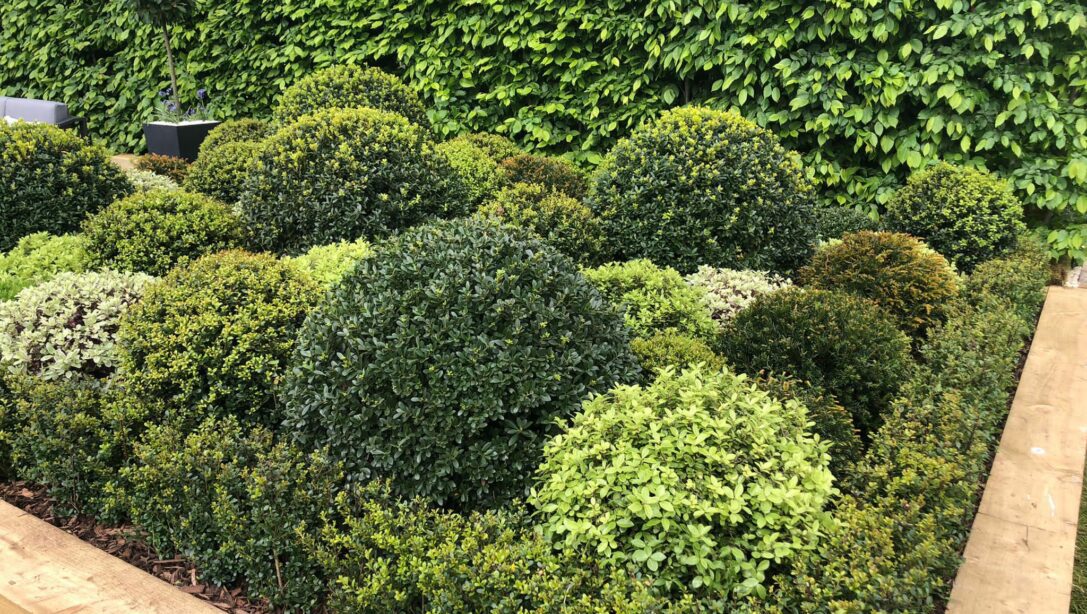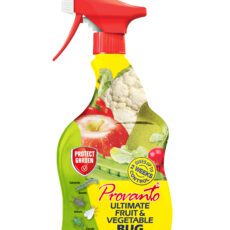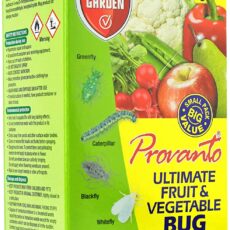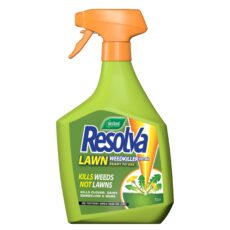Box blight is becoming an ever-increasing issue in many UK gardens, but the experts at Hillier have put together recommendations to prevent the problem of Box Blight as well as some alternatives that can be planted.
What is Box Blight?
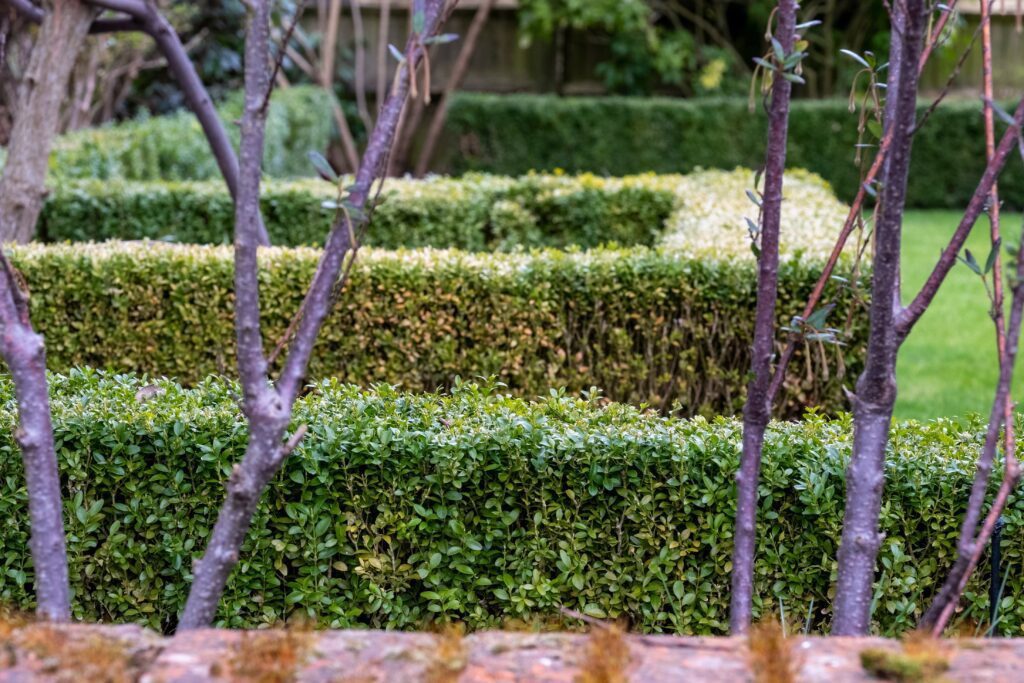
Box blight is a disease of box leaves and stems caused by two closely related fungi, Calonectria pseudonaviculata and Calonectria henricotiae. These fungi largely affect Buxus species.
Hillier fact: Buxus is the Latin name for Box.
Box blight can often be mistaken for Box tree caterpillar. Box tree caterpillars are the larvae of a moth that feeds on Box (Buxus) plants. It is native to East Asia and became established in Europe in 2007.
About Box Blight
You can cut affected areas out as Box blight does not affect the roots of Box plants. However, the new shoots may also become infected.
If after you have cut out infected areas, this has not gotten on top of the problem you may need to take more drastic action. You could try cutting the height and width of your plants back by half or a third. This, of course, is not an option on topiary but is worth trying on hedges. Removing the affected areas gives increased light and air circulation to the healthy parts of the plant lower down, promoting their recovery.
Hillier suggestions for preventing Box Blight
- Prune only once a year, in dry weather
- Ensure good air circulation around your plants
- Practise good plant hygiene
- To avoid spreading the disease, dispose of any infected material – do not compost
- Clean all tools, shoes and clothing once you have worked on the infected areas
- If you are replacing the box, make sure to quarantine any new plants
- Avoid splashing the leaves when watering
- Avoid high-nitrogen fertilisers
- High-nitrogen fertilisers will cause your Box to grow dense and lush – the ideal climate for Box blight to progress
- A general-purpose fertiliser will help plants recover from any leaf loss that may have occurred. Apply in the spring or summer.
- Don’t replant for six years after an infection
Recommended alternatives to Box by Hillier
Ilex crenata
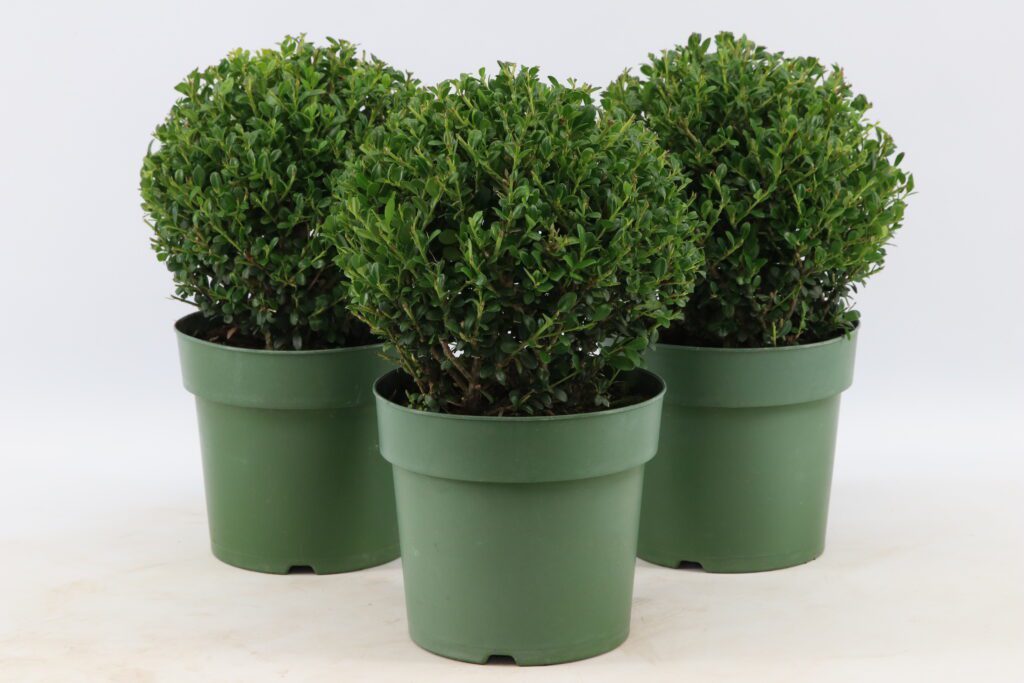
Ilex crenata is very easy to grow and will tolerate almost all situations, with the exception of very wet soil and dense shade. Prune in spring and then again in autumn to maintain a tidy shape. Making excellent dwarf hedges, Ilex crenata will work well in courtyard gardens or as an edging in a cottage garden.
Pittosporum tenufolium ‘Golf Ball’
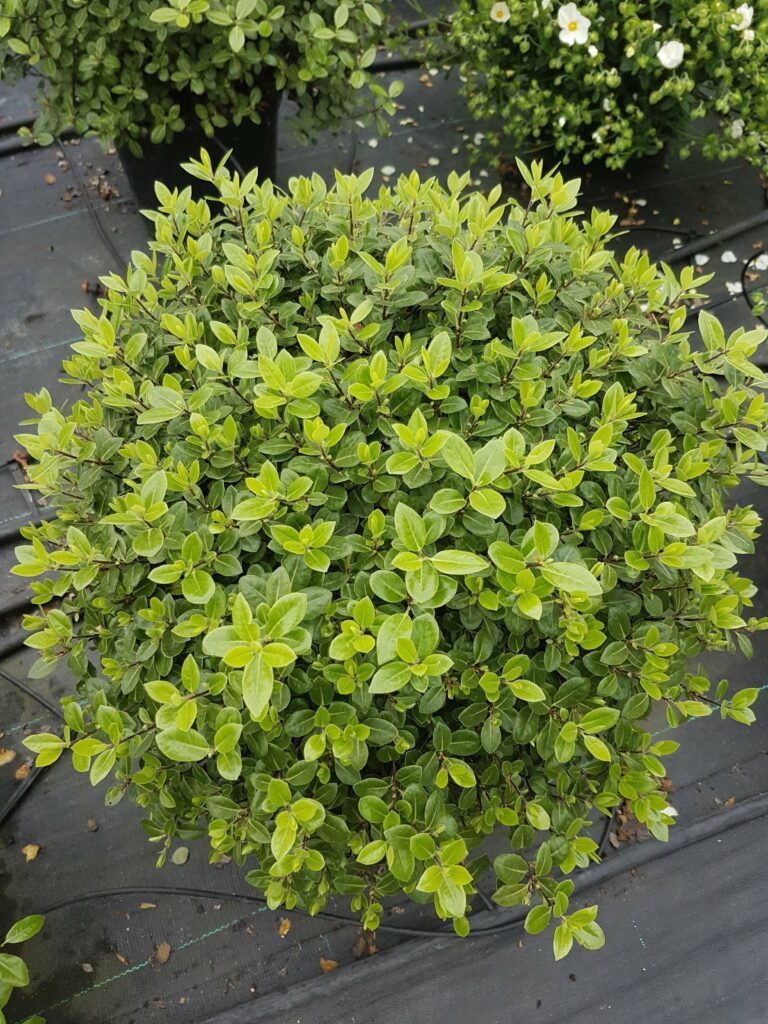
Pittosporum tenufolium ‘Golf Ball’ is an evergreen shrub with bright green leaves that will tolerate most locations and soil types. It will naturally produce a dense, rounded globe up to 1m in diameter.
Taxus baccata
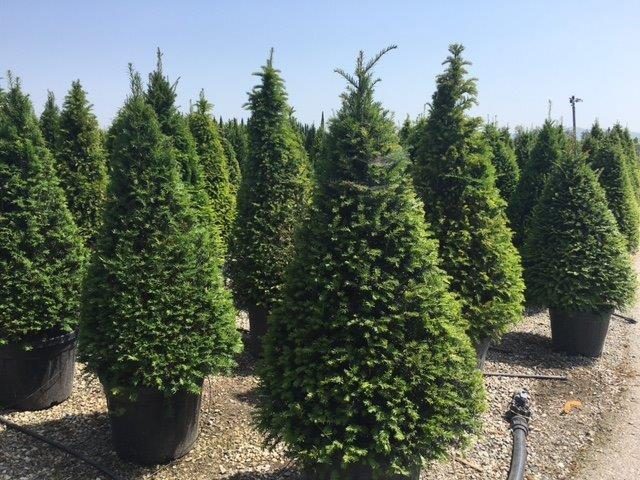
Taxus baccata is a native British evergreen, also known as yew. You can grow Taxus baccata in moist, well-drained soil in the shade and you should trim it annually to ensure they are kept tidy. If left untrimmed, yew will grow into tree form.
Lonicera nitida ‘Maigrun’
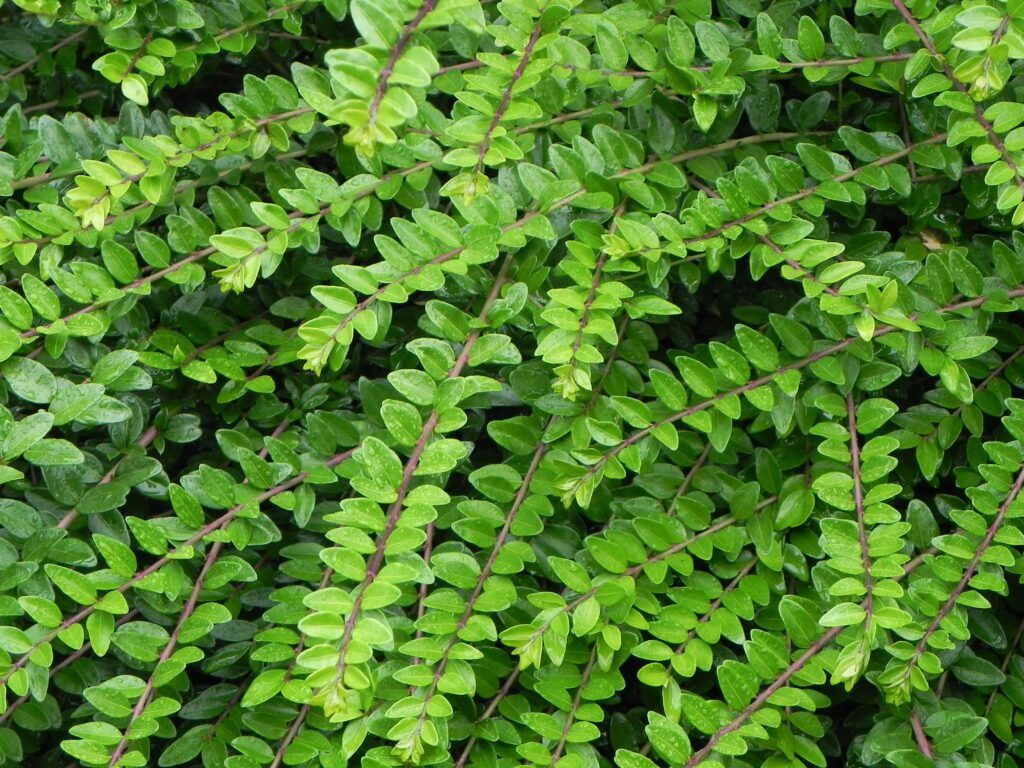
Lonicera nitida is a fast-growing evergreen honeysuckle with small but abundant leaves that make a dense, easily maintainable hedge. You can grow Lonicera nitida in full sun or partial shade as it will tolerate any aspect and any soil type. Clip on a regular basis to maintain the desired size and shape.
Pittosporum tenuifolium ‘Bannow Bay’
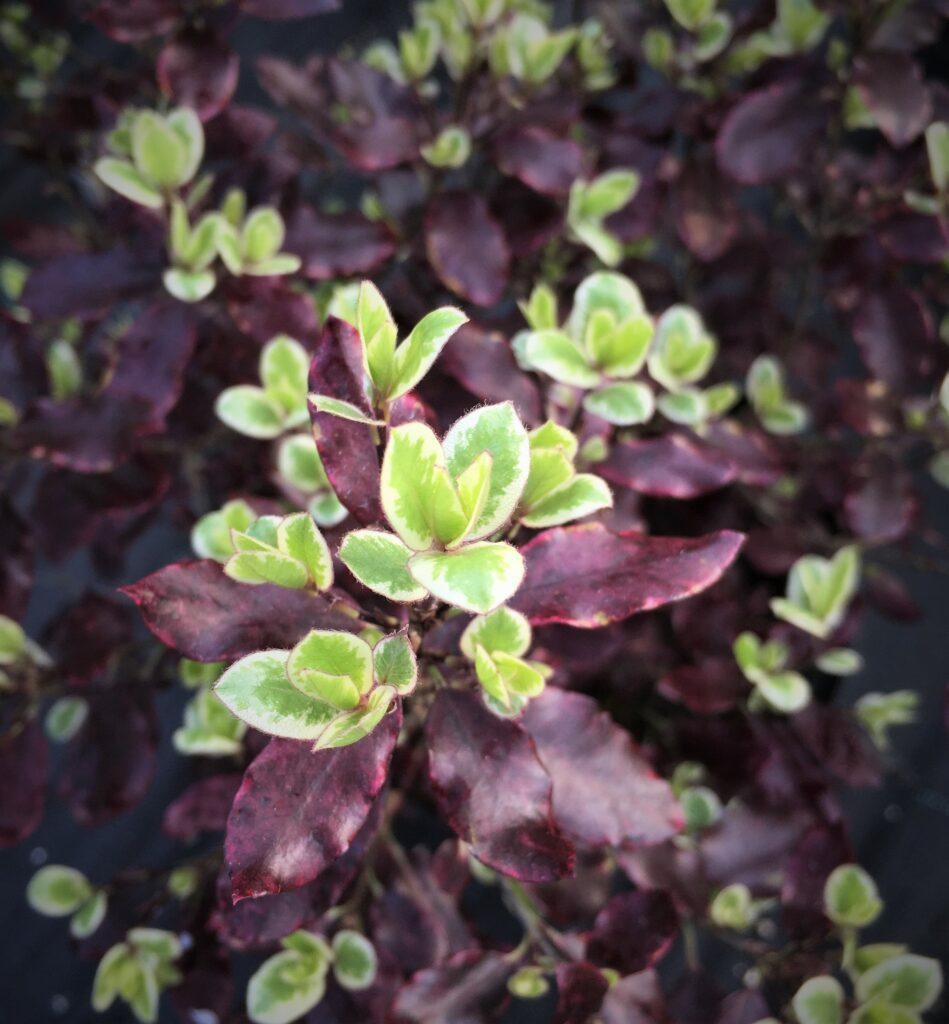
Pittosporum tenuifolium ‘Bannow Bay’ is an evergreen dwarf variegated shrub. Blooming in spring it has fragrant purple flowers. The variegated foliage emerges cream and green but will mature to pink, cream and olive green over the summer. Leaves turn to a darker pink and then to red in the winter months, meaning a year-round attraction. In early summer tiny bell-shaped purple flowers emerge. These are very attractive to pollinators and are highly scented so you can enjoy their wonderful fragrance. Growing best in full sun and moist, well-drained soil, this particular variety responds well to pruning and will produce dense fresh foliage.
Corokia x virgata
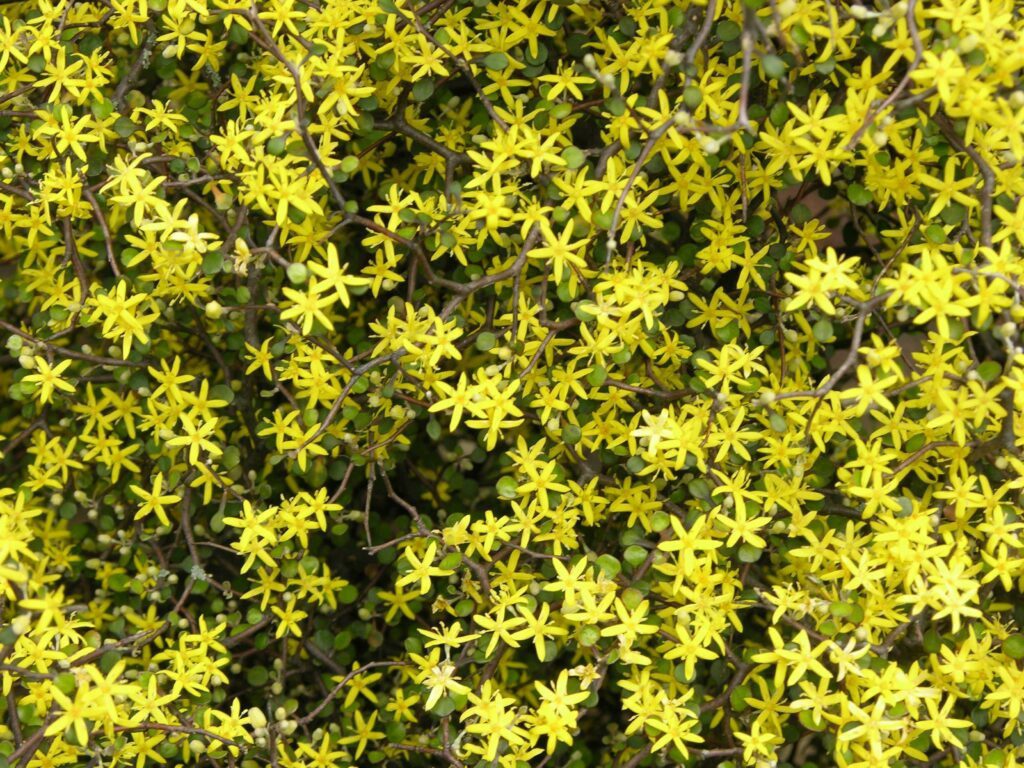
Corokia x virgata will grow up to 2 meters high and display silvery, wiry stems, green leaves with silvery-white undersides. Starry yellow five-petalled flowers will emerge in late spring and early summer. These will then be followed by small, bright orange fruits for further attraction. You can grow Corokia x virgata in full sun and well-drained soil.
Berberis thunbergii ‘Orange Rocket’
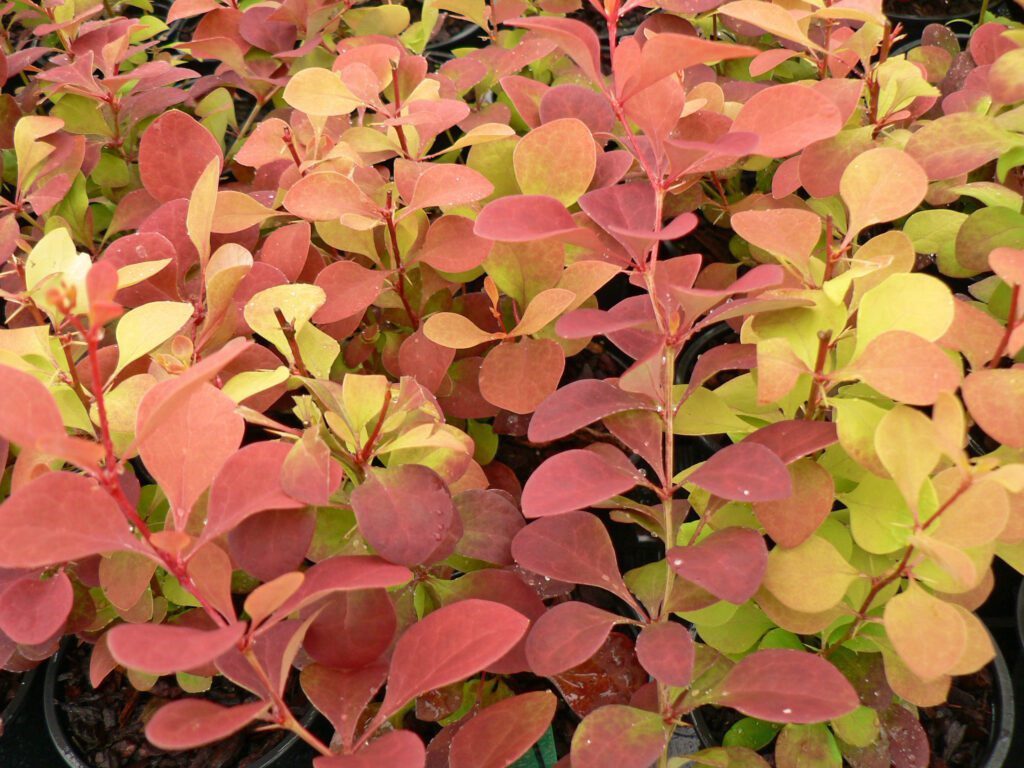
When grown in a sunny spot the coloured foliage of this dazzling, deciduous shrub emerges a bright orange-red before turning a deeper ruby. This dramatic transition really catches the eye! It has a naturally slender and upright habit, so it also lends itself well to forming a hedge or screen. As well as the colourful foliage, Berberis ‘Orange Rocket’ also produces small yellow flowers in spring and early summer. These are followed by red berries in the autumn. These are best grown in full sun to maximise the colour, this shrub will tolerate any soil type and is fully hardy.
Ligustrum undulatum Lemon Lime and Clippers
This variety of Ligustrum (privet) has small, wavy-edged leaves and an exceptionally bright golden colour that lasts all season. Ligustrum Lemon and Lime Clippers have great potential as hedging plants and could be very effective Box replacements. Best grown in well-drained soil and sun or partial shade, clip the shrub twice a year in Spring and Autumn to keep it tidy.
Our friendly Hillier team are always on hand to help you with any questions you may have in regards to Box blight. For more information please contact us here .
Or you can visit your local Hillier Garden Centre. Find your nearest centre here.


